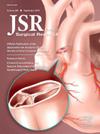既往 2 型糖尿病对肾移植结果的影响以及与存活率相关的因素:单中心分析。
IF 1.8
3区 医学
Q2 SURGERY
引用次数: 0
摘要
简介肾移植(KT)是治疗终末期肾病的首选方法。糖尿病是肾移植最常见的适应症,大多数受者患有 2 型糖尿病(T2DM)。以往的研究显示,T2DM KT 受术者的存活率较低。这项单中心研究旨在了解与长期不良预后相关的个体因素:这是一项单中心回顾性分析,研究对象为 2012 年至 2017 年期间接受 KT 治疗的成年患者,包括 T2DM 患者和非 T2DM 患者,随访至 2022 年 12 月。主要结果为移植物丢失和患者存活率。采用单变量、多变量 Cox 回归和 Kaplan-Meier 分析评估 KT 结果:我们分析了 1185 名患者,其中 288 人(24.3%)患有 T2DM。T2DM患者年龄较大,分别为(56.6±9.8)岁和(47.1±13.7)岁:本研究表明,T2DM 与 KT 后移植物丢失和死亡风险增加密切相关,尤其是在年龄较大、冷缺血时间较长、移植物功能延迟的死亡供体移植受者中。这强调了避免老年 2 型糖尿病肾移植受者移植功能延迟以及优先考虑活体供者的重要性。本文章由计算机程序翻译,如有差异,请以英文原文为准。
Association of Pre-Existing Type 2 Diabetes on Kidney Transplant Outcomes and Factors Correlating With Survival: A Single-Center Analysis
Introduction
Kidney transplantation (KT) is the treatment of choice for end-stage renal disease. Diabetes mellitus is the most common indication for KT, with most recipients having type 2 diabetes mellitus (T2DM). Previous studies have shown inferior patient survival in T2DM KT recipients. This single-center study aimed to understand the individual factors associated with negative long-term outcomes.
Methods
This is a single-center retrospective analysis of adult KT recipients, with and without T2DM from 2012 to 2017 with a follow-up through December 2022. Primary Outcomes were graft loss and patient survival. Univariate, Multivariate Cox regression, and Kaplan–Meier analyses were used to assess KT outcomes.
Results
We analyzed 1185 patients, 288 (24.3%) with T2DM. T2DM patients tended to be older, 56.6 ± 9.8 versus 47.1 ± 13.7 y. (P < 0.01), male (66.3% versus 58.2% P < 0.001) had a higher body mass index, 31.3 ± 5.4 versus 27.4 ± 5.7 P < 0.01) and less likely to get a living donor transplant (46.5% versus 58.4%, P < 0.01). T2DM patients after KT had a 50% higher risk for graft loss (hazard ratio 1.509, 95% CI 1.15-1.95, P < 0.001) and a 106% higher risk of death (hazard ratio 2.06 (95% CI 1.48-2.87, P < 0.0001). Among the T2DM patients, the most common cause of death was infection (39.9%). The average HbA1c at 1 y after transplant was 7.8%.
Conclusions
The present study shows that T2DM is strongly associated with an increased risk of graft loss and death after KT, particularly in older recipients of deceased donor transplants with longer cold ischemia time that experience delayed graft function. This underscores the importance of avoiding delayed graft function in older, type 2 diabetic kidney transplant recipients and prioritizing living donors.
求助全文
通过发布文献求助,成功后即可免费获取论文全文。
去求助
来源期刊
CiteScore
3.90
自引率
4.50%
发文量
627
审稿时长
138 days
期刊介绍:
The Journal of Surgical Research: Clinical and Laboratory Investigation publishes original articles concerned with clinical and laboratory investigations relevant to surgical practice and teaching. The journal emphasizes reports of clinical investigations or fundamental research bearing directly on surgical management that will be of general interest to a broad range of surgeons and surgical researchers. The articles presented need not have been the products of surgeons or of surgical laboratories.
The Journal of Surgical Research also features review articles and special articles relating to educational, research, or social issues of interest to the academic surgical community.

 求助内容:
求助内容: 应助结果提醒方式:
应助结果提醒方式:


